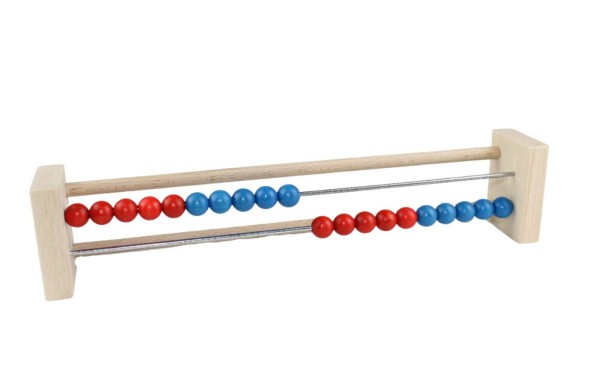colorful and simple arithmetic aid for the start of school life
Abacus and counting frame from the Erzgebirge are an optimal learning aid for your child in the field of mathematics in pre-school and primary school age. It is a simple mechanical calculation aid, which were already created between 2,700 and 2,300 BC. The abacus consists of a frame with wooden or glass beads, which are threaded on rods. The pearls represent a certain number due to their location and allow the basic arithmetic types of addition, subtraction, multiplication and division. In our online shop you will find various with pearls in different colors.
Where and by whom was the abacus invented?
The term abacus comes from the Greek and means board. The Sumerians invented the arithmetic board using the decimal system as early as 2700 to 2300 BC. From there, this calculation aid was exported to many other empires, for example to Greece, Japan or China.
Is the Abacus suitable for kindergarten children?
Children have no concept of numbers and quantities. For example, they cannot touch or look at the number 5, so it is difficult for them to develop an understanding of numbers. The understanding of numbers and quantities can be promoted with an abacus even in the age of Kindergarten. In this way, children can visualize the terms "more and less" and solve their first addition and subtraction tasks. The tens transition also becomes clearer when using the abacus and helps the children to calculate clearly. In addition to learning arithmetic, the child's ability to concentrate also increases.
How does an abacus work?
In our online shop at seiffen.com you will find two different types of abacus, with 20 or 100 balls. Here is just a simple example of how to use the abacus in the number range up to 20.
The abacus has 10 beads per stick, so with two sticks 20 beads. In the first row, the beads have a value of 1, in the second row they have a value of 10.
In the simplest case, an abacus has 10 beads per rod (row). A simple method of calculating with the abacus is to assign different values to the beads in each row. When adding 12 + 7, you start with the highest rank, in this case with one bead in the second row (1 tens) and two beads in the first row (2 ones). You will be pushed to the right. To add seven, add seven beads on the right side in the first row. Then the beads in the second row and the beads in the first row are added together in terms of their value. There are nine beads in the one row representing the number 9 and one bead in the second row representing the number 10, giving a value of 19.
Handling the abacus requires a bit of patience, which makes arithmetic all the more fun.

